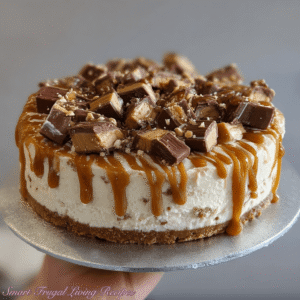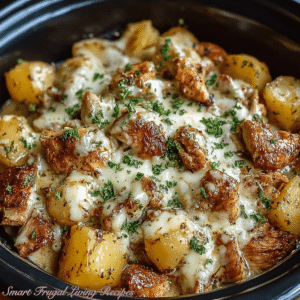Introduction
Few baked goods hold as much nostalgic charm as a warm batch of chocolate chip cookies. The irresistible aroma of buttery dough mingling with sweet, melting chocolate has the power to transport anyone back to childhood memories of kitchen counters dusted with flour and cookie sheets lined with golden, chewy treats. Chocolate chip cookies are one of the most beloved desserts worldwide, and for good reason: they strike the perfect balance between crispy edges and a soft, gooey center.
Invented in the 1930s by Ruth Wakefield at the Toll House Inn, the original recipe has since become a cornerstone of home baking. While countless variations exist, the core of what makes a great cookie remains the same—quality ingredients, careful mixing, and just the right bake time. Whether you prefer them soft and chewy, crispy and crunchy, or packed with extra chocolate chunks, there’s a version for everyone.
Chocolate chip cookies aren’t just a dessert—they’re a universal comfort food. They’re easy enough for beginner bakers yet versatile enough to allow seasoned chefs to experiment with flavors and techniques. Whether served fresh out of the oven with a cold glass of milk, tucked into lunchboxes, or given as gifts during the holidays, these cookies never fail to bring joy.
For more background on the history of chocolate chip cookies, you can explore Smithsonian Magazine’s article on their invention. And if you’d like to dive deeper into perfecting your baking skills, the guides available at King Arthur Baking are a treasure trove for both beginners and professionals.
Now let’s get into the complete recipe for homemade chocolate chip cookies, followed by expert techniques, storage tips, dietary substitutions, and answers to common questions so you’ll never have a failed batch again.
Basic Recipe: Ingredients and Instructions

Chocolate chip cookies
Ingredients
Method
- Preheat the oven to 350°F (175°C) and line baking sheets with parchment paper.
- Cream butter and sugars together in a large mixing bowl until light and fluffy. This step is crucial for texture.
- Add eggs and vanilla, mixing until fully combined.
- In a separate bowl, whisk flour, baking soda, baking powder, and salt.
- Gradually add dry ingredients to the wet mixture, stirring gently to avoid overmixing.
- Fold in chocolate chips (and nuts, if using). The dough should be thick but scoopable.
- Scoop dough into tablespoon-sized balls and place them 2 inches apart on prepared sheets.
- Bake for 9–11 minutes, until the edges are golden but centers are still slightly soft.
- Cool on the baking sheet for 5 minutes before transferring to a wire rack.
Notes
Advanced Techniques
Using Brown Butter for Depth of Flavor
Brown butter, also known as beurre noisette, is created by cooking butter until its milk solids toast and develop a nutty aroma. Using brown butter in chocolate chip cookies adds incredible depth, giving them a rich, caramel-like flavor that complements the sweetness of the chocolate. To make brown butter, simply melt your butter over medium heat and stir constantly until golden brown specks form. Let it cool slightly before mixing with the sugars. This small adjustment can elevate your cookies to bakery-level perfection.
Chilling the Dough for Texture
Chilling cookie dough for at least 24 hours before baking allows the flour to fully hydrate and the flavors to meld. This results in a more caramelized, chewier cookie with deeper complexity. The chilled dough also spreads less during baking, ensuring thicker cookies with soft centers. Wrap the dough tightly in plastic wrap or store it in an airtight container before refrigerating. For even better results, scoop dough balls before chilling so you can bake directly from the fridge.
Mixing Chocolate Varieties
Instead of sticking to one type of chocolate chip, consider combining semisweet, dark, milk, or even white chocolate. Different chocolates bring unique levels of sweetness and bitterness, creating a layered flavor profile. Large chocolate chunks that melt into puddles will also give your cookies a luxurious texture. For added indulgence, chop up a high-quality chocolate bar and fold it into the dough for those “pocket of chocolate” moments in every bite.
Adding a Sprinkle of Sea Salt
A light sprinkle of flaky sea salt on top of warm cookies enhances the flavors by balancing sweetness with a hint of savory contrast. Salt intensifies chocolate’s richness and gives each bite a satisfying burst of flavor. Don’t substitute with table salt—opt for coarse sea salt or Maldon flakes for best results. This simple addition turns your homemade cookies into gourmet-level treats.
Experimenting with Alternative Flours
While all-purpose flour works perfectly, experimenting with different flours can yield exciting results. Bread flour makes cookies chewier, while pastry flour gives them a more tender bite. Whole wheat flour adds nuttiness and extra fiber. For a trendy twist, try oat flour or almond flour for added flavor complexity. Always adjust ratios carefully to maintain the right dough consistency.

Storage, Shelf Life, and Maintenance Tips
Proper Room Temperature Storage
Store cookies in an airtight container at room temperature to keep them fresh for up to one week. To maintain their chewiness, place a slice of bread inside the container. The bread will release moisture, preventing cookies from drying out. Replace the bread slice every two days to keep results consistent.
Freezing Cookie Dough
If you want fresh-baked cookies on demand, scoop dough into individual balls and freeze them on a tray. Once solid, transfer them to a freezer-safe bag or container. When ready to bake, place the frozen dough directly on a baking sheet and add 2–3 extra minutes to the bake time. Frozen cookie dough lasts up to 3 months.
Freezing Baked Cookies
Baked cookies can also be frozen. Allow them to cool completely, then store them in layers separated by parchment paper inside a freezer-safe container. They will stay fresh for up to 2 months. To enjoy, thaw at room temperature or reheat in a warm oven for a few minutes.
Reviving Stale Cookies
If your cookies lose freshness, place them in a microwave with a damp paper towel for 10 seconds. The steam helps rehydrate them slightly. Alternatively, warm them in a 300°F (150°C) oven for 5 minutes to restore a just-baked texture.
Long-Term Pantry Storage Hacks
If you bake often, consider vacuum-sealing your cookies or dough for longer storage. Removing air prevents staleness and freezer burn. Investing in quality airtight glass containers also helps maintain flavor and texture better than plastic.

Dietary Adaptations and Substitutions
Gluten-Free Chocolate Chip Cookies
To make gluten-free cookies, substitute the all-purpose flour with a 1:1 gluten-free baking blend. These blends often contain xanthan gum, which mimics gluten’s structure. Almond flour or oat flour can also be used, though adjustments in egg or binding agents may be necessary.
Vegan Chocolate Chip Cookies
For vegan adaptations, replace butter with coconut oil or vegan margarine, and swap eggs for flaxseed or chia seed “eggs” (1 tablespoon ground seeds + 3 tablespoons water = 1 egg). Use dairy-free chocolate chips, and you’ll have chewy, plant-based cookies without compromising taste.
Keto-Friendly Low-Carb Cookies
Replace flour with almond flour or coconut flour and substitute sugar with erythritol or monk fruit sweetener. Sugar-free chocolate chips make this recipe keto-friendly. These cookies will be denser, but they provide a satisfying low-carb treat for those avoiding sugar.
Nut-Free Chocolate Chip Cookies
If allergies are a concern, skip the nuts entirely or substitute with pumpkin seeds or sunflower seeds for added crunch. Always double-check that your chocolate chips are manufactured in nut-free facilities for safety.
Dairy-Free Chocolate Chip Cookies
For those who are lactose intolerant, swap butter with plant-based margarine and use dairy-free chocolate chips. Coconut milk can also replace any milk ingredients if you prefer extra richness.

FAQs About the Recipe
Why do my cookies spread too much?
Cookies often spread excessively if the butter was too soft or melted before baking. Always start with room-temperature butter, not melted. Chilling the dough before baking also helps prevent spreading by firming up the fats.
Can I make the dough ahead of time?
Yes, cookie dough can be stored in the refrigerator for up to 72 hours. The longer the dough rests, the deeper the flavor. For convenience, pre-scoop dough balls and refrigerate or freeze them so you can bake in small batches whenever desired.
How do I get soft, chewy cookies instead of crispy ones?
Chewy cookies depend on higher moisture retention. Use more brown sugar than white sugar, slightly underbake them, and store them in an airtight container. Using bread flour instead of all-purpose can also increase chewiness.
What’s the best chocolate to use?
High-quality chocolate makes a noticeable difference. Instead of only using store-bought chips, chop a bar of premium chocolate. This creates uneven chocolate distribution with larger “puddles,” giving every bite a decadent texture.
Why are my cookies dry or cakey?
Overmixing dough can lead to too much gluten development, making cookies dense and cakey. Incorrect flour measurements (too much flour) can also dry them out. Always spoon flour into your measuring cup instead of scooping directly to avoid compacting it.

Conclusion & Final Thoughts
Chocolate chip cookies are timeless, versatile, and endlessly adaptable. From the classic Toll House recipe to modern twists with brown butter, sea salt, or alternative flours, they offer endless possibilities for personalization. Whether you’re baking them for a quick weekday treat, a holiday gift, or a late-night indulgence, these cookies remain a symbol of home-baked comfort.
The beauty of chocolate chip cookies lies not just in their taste, but in their ability to connect people—shared during family gatherings, baked as a heartfelt gift, or savored quietly with a warm drink. The recipe provided here gives you a dependable foundation, but the advanced techniques and adaptations allow you to make them truly your own.
From proper storage methods that ensure they stay fresh longer to dietary substitutions that make them accessible for everyone, you now have all the knowledge needed to bake cookies that are both delicious and customizable. Baking isn’t just about following a recipe; it’s about experimenting, enjoying the process, and sharing joy through food.
So, next time you crave something sweet, skip the store-bought versions and bake a batch of homemade chocolate chip cookies. With crispy edges, gooey centers, and that irresistible chocolatey goodness, they are guaranteed to bring comfort and smiles every single time.



